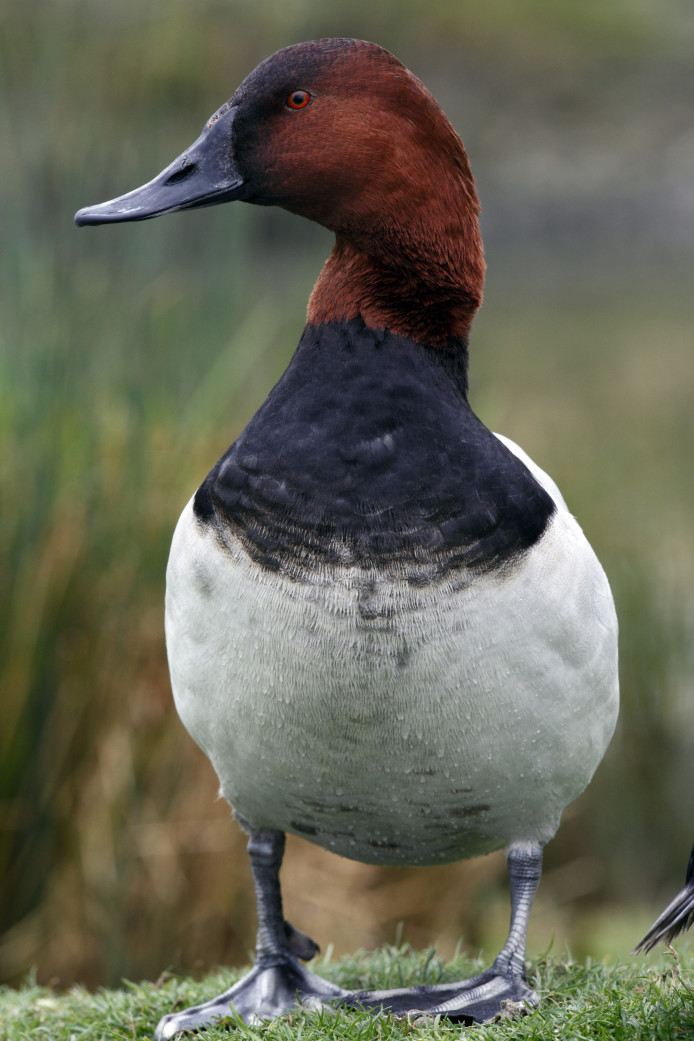Duck hunting is, hands down, one of the best things we do with a rifle in hand — especially when hunting beautiful, big ducks like canvasbacks. These social, gorgeous and delicious ducks are a must-shoot for any duck hunter around. The key? Knowing what they look like, how they behave and where you can find them. Here’s your guide to hunting canvasback, from where to find them all the way to our go-to tips for making the right shot.
What to know about canvasback
A diving duck that can be found all across North America, canvasbacks are extra-sociable ducks. Nicknamed the “aristocrats of ducks,” canvasbacks are known to be elegant-looking. Their sloping heads make them instantly recognizable compared to the other diving ducks you may see, and that head shape is essential to identify them quickly.
When it comes to distinguishing between male and female canvasbacks, look first for their body colors. Male canvasbacks have a white body, while females have a pale body — sometimes light grey. Males usually have a black chest and rear, and females have darker chests and rears as well. Canvasback are large ducks, and their oval bodies sit and slope down into the water.

Where to hunt canvasback
If you’re wondering where to hunt canvasback ducks in the United States, there are 6 states that canvasbacks really enjoy calling home — Texas, California, Wisconsin, Louisiana, North Dakota and Minnesota. Spring, fall and winter are all great times of the year to look for canvasbacks, which really pop up all across the United States. You’ll want to look in lakes and ponds, as well as marshes — and in the winter, take a look in deeper lakes. If you’re lucky, you may see them in coastal waters as well.
Common habits of canvasback
Canvasback ducks are surface diving ducks, and, while sociable ducks, are often pretty wary of outsiders — i.e., duck hunters. They prefer being sociable with their own canvasback species but also tend to mix with redhead ducks and scaups. These diving ducks look for plant tubers, seeds, wild celery and clams, and are usually looking for fellow ducks to hang out with or plants to eat.
How to hunt canvasback
A large — and wary — species, the canvasback can be tricky to shoot. Studying their behaviour in your desired hunting location is the best way to ensure a successful hunt. Don’t expect to just walk out the door and bag one. Knowing their feeding, loafing and roosting habits, and how those are effected by weather, environment and human pressures is important. If you want to tilt the odds further in your favor, you can book a guided hunt with an expert who is well versed in the habits of the local cans.
As previously mentioned, cans are social ducks. When hunting canvasback your decoy spread needs to be extensive and well thought out. These divers prefer the company of their own kind, so stick to using diving decoys that feel natural to your environment.
When it comes to picking shots for your hunt, you should be picking something in the area of a #2 or #3 – and be prepared to take 2-3 shots before the bird will succumb, due to its substantial size and thick feather pattern.
—
Successfully hunting canvasback can be a challenge for even the most seasoned waterfowler, however implementing some of these tips can greatly increase your odds. By thoroughly surveying your local habitat, deploying the right size and mix of decoys and using a heavy shot you will greatly improve your chances of adding a can to your trophy wall.
Ready to take on the canvasback? Make sure you’re hunting safely and legally with our narrated, animated and engaging hunting safety course.










